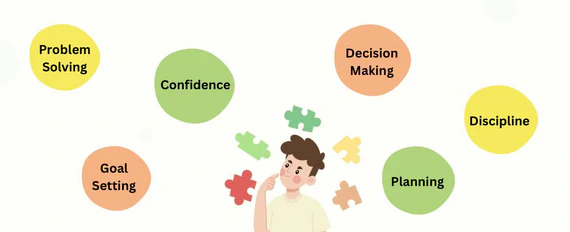
Money in Action: How Everyday Choices Help Students Learn About Money
When we think of financial education, we think: lessons, worksheets, or classroom discussions. However for students, …

When did you first learn how to manage money?
For many adults, the answer would be something like:
“When I got my first job.”
“After I made a few mistakes.”
“I’m still figuring it out.”
And that’s not surprising. Most of us were never taught how money works. We picked it up as we went along.
But this approach doesn’t work in today’s day and age anymore. Now that they grow up with mobiles and gadgets in their hands, purchasing apps and buying game credits, young people are making money decisions earlier than ever, often without any real support.
So why aren’t we talking to them about it sooner?
10-14 years is a crucial age where students start building their sense of independence, making choices about what they value, and how they want to fit into the world around them.
They may not have full time jobs or bills, but they do have:
And without context, they often fill in the gaps with what they think is true:
“Saving means not having fun.”
“If it’s on sale, it’s a good deal, even if I don’t need it.”
“If I have to budget, it means I’m broke.”
These aren’t careless ideas: they’re just gaps in understanding.
We teach maths, but not how to budget.
We cover digital safety, but not how to spot a financial scam.
We talk about careers, but skip over how money will fit into their everyday lives.
So what happens?
Students figure it out themselves. Sometimes that works. But more often, it leads to:
This isn’t about intelligence. It’s about preparation. Even the most capable students can feel lost if no one shows them the basics.
Financial education at this stage doesn’t mean introducing complex concepts like investments or taxes. It means starting simple, relatable conversations that give students confidence and clarity.
Think:
These are practical ideas. And they work best when they’re introduced before money becomes a problem.
Hence, financial literacy isn’t a checklist item. It’s a life skill! Just like learning how to cook or managing your time.
And like any skill, it’s easier to learn before habits become permanent.
So, the earlier we start introducing these concepts, the more confident students become. Not just about spending or saving, but about thinking independently, planning ahead, and making choices that align with who they want to be.
Because at the end of the day, money isn’t just about numbers, it’s about mindset!

When we think of financial education, we think: lessons, worksheets, or classroom discussions. However for students, …

Financial education for most of us means calculators, budgets, or a worksheet on saving. But here’s the truth: learning …